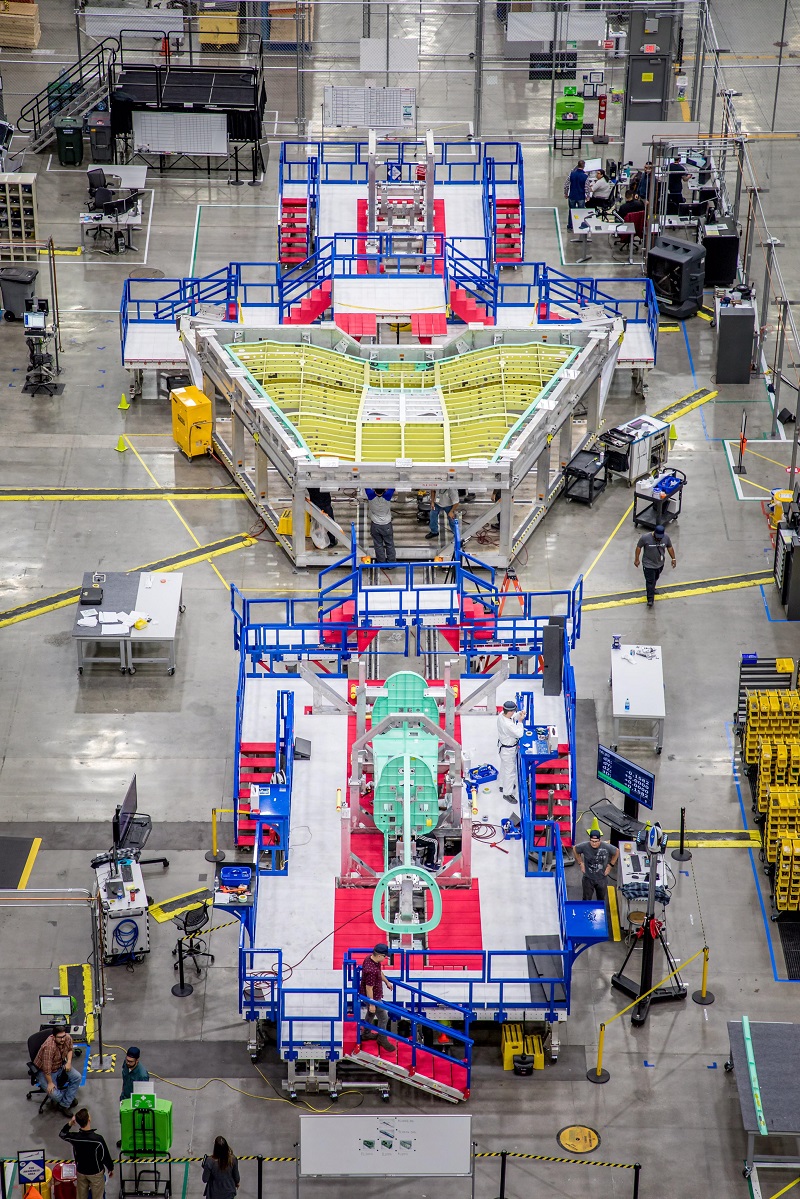NASA announced December 16 that it had approved the final assembly of the X-59 Quiet SuperSonic Transport (QueSST). Built in partnership with Lockheed Martin Corporation, the X-59 QueSST is designed to cruise at more than 1,500 kph at almost 17,000 meters and create a sound about as loud as a car door closing, Lockheed says.

Illustration of the completed X-59 QueSST landing on a runway (© Lockheed Martin)
It was the last programmatic hurdle for the plane to clear before officials meet again in late 2020 to approve the airplane’s first flight in 2021.
“We have everything in place to continue this historic research mission for the nation’s air-traveling public,” said Bob Pearce, NASA’s associate administrator for Aeronautics.
The X-59, NASA’s first large-scale, piloted X-plane in three decades, is shaped to reduce the loudness of a sonic boom reaching the ground to that of a gentle thump, if it is heard at all. It will be flown above select U.S. communities to generate data from sensors and people on the ground in order to gauge public perception. That data will help regulators establish new rules to enable commercial supersonic air travel over land.
Because of its long, slender shape, the plane will feature an innovative cockpit eXternal Visibility System, whose software and cameras will provide pilots with an augmented reality view of the airspace in front of the plane, without a forward-facing cockpit window.

Image of the X-59 main assembly coming together (© Lockheed Martin)
The X-59 will be the latest in a series of experimental NASA aircraft and spacecraft that began with the Bell Aircraft X-1, which Air Force Capt. Chuck Yeager flew in 1947 to break the sound barrier for the first time in history.
Lockheed Martin Aeronautics Company’s Skunk Works factory in Palmdale, California, is building the X-59 under a $247.5 million contract, with final assembly targeted for late 2020.
See the plane in action with this video from Lockheed.







COMMENTS2
アメリカ合衆国の大学院に留学したとき、数学部の教授にヘリコプターもってるなら、のせてって聞いたら、ヘリコプターは、プロペラ止まったりしたら、まず助からないくらい危険度が高いから、エンジン止まっも、風に乗って着地できる昔ながらの飛行機が、安全だから、軍がいらないのを安く買っていると聞いておりますが、御社のヘリコプターや飛行機などは、安全ですか。働いている方々、乗っていた方々は、安全と思っていらっしゃいますか。用途によっては、昔ながらの特攻隊などは、安全性問題から、もちろん、禁止ですよね。
ヘリコプタのエンジンが止まった時、ヘリコプターのローター(回転翼)が下から風を受けて、回転して降下速度を大きく下げます。オートローテーションという言葉で調べてください。オートローテーションに入ったヘリコプタは降下する速度の4倍くらいの速度で前進飛行もできます。ですので着陸地点を選ぶことができます。着陸の時、パイロットの操作で一瞬降下速度を0にできますので、安全に着陸できます。この機能がありますので普通の航空機より安全かもしれません。
LEAVE A COMMENT
TOP